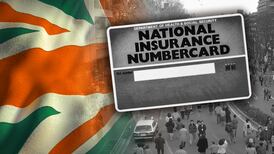French police say they have identified three men as suspects in the deadly attack on a French satirical magazine in Paris which killed 12 people.
The suspects were named as brothers Said Kouachi and Cherif Kouachi, French nationals in their early 30s, and 18-year-old Hamyd Mourad, whose nationality is unclear.
One official said the men were linked to a Yemeni terrorist network.
There were reports last night that a police operation was under way in the northeastern city of Rheims.
National mourning
President François Hollande declared three days of national mourning, after gunmen murdered 10 journalists and two policemen at the headquarters of Charlie Hebdo. Eleven others were wounded, four critically.
Mr Hollande paid homage to the “cartoonists of great talent, courageous columnists” who “marked generations of French people through their influence, their insolence and their independence.”
Flags will fly at half mast for three days, and the country will observe a moment of silence at noon today.
Two gunmen mowed down the journalists in the midst of their weekly editorial meeting, the first of the new year.
As they came out of the building, the assassins could clearly be heard shouting "Allahu Akbar" – "God is great" in Arabic – on amateur videos. They also shouted "Charlie Hebdo is dead," and "We have avenged the Prophet."
Algerian war
Not since the 1954-1962 Algerian war have so many people been killed in an attack on French territory.
The gunmen engaged in street gun battles with police three times as they fled. One shot a wounded policeman as he lay on the pavement.
Police launched a city-wide manhunt after the assassins disappeared in northeast Paris, near the Porte de Pantin.
Police helicopters were not able to follow them because of poor weather.
Laurent Richard, the editor in chief of the Premières Lignes television news agency, which is based in the same building as Charlie Hebdo, arrived on the scene the moment the massacre was finished.
"First I saw a body on the pavement," Mr Richard told France 2 television. He was a maintenance worker for the building, being taken away by rescue workers. Then we opened the door to Charlie's offices. There was a powerful odour of gun powder. It was an absolute war scene: no electricity, everything broken. Bodies everywhere.
“The important thing was to figure out who was alive, and not lose one’s calm.”
Threatened
The satirical weekly, which was founded in 1969 and named after Gen Charles de Gaulle, was first threatened by Islamists when it published 12 cartoons of the prophet Muhammad from the Danish newspaper Jyllands Posten in 2006. The cover showed a cartoon of Muhammad with the words, "It's hard to be loved by idiots."
Charlie Hebdo won a lawsuit filed by Muslim groups the following year. They specifically objected to a cartoon showing Muhammad with a bomb in his turban and another of the Prophet holding back a group of would-be suicide bombers with the words "Stop, we've run out of virgins."
The magazine’s previous headquarters was burned down in 2011, when it published a “Sharia Hebdo” issue, allegedly edited by the Prophet to mark the advent of an Islamist government in Tunisia.
The magazine's last tweet was a cartoon of Abu Bakr al-Baghdadi, the self-proclaimed "caliph" of the Islamic State which last year seized nearly a third of Iraq and Syria.
The National Front leader Marine Le Pen was the only politician who unequivocally blamed the massacre on "fundamentalist Islamists".
The ministry of the interior raised the terrorist alert level to maximum. An additional 500 policemen were deployed in Paris.
Tens of thousands of French people held candle-lit vigils on the Place de la République, near the scene of the massacre, but also in Lyon, Marseilles, Toulouse and other French and European cities.








